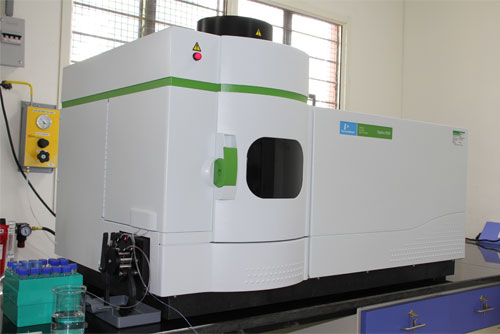Evolution and innovations in ICP-MS Spectroscopy

Inductively Coupled Plasma- Mass Spectroscopy (ICP-MS) is the optimum choice when you have to carry out ultra-trace level determinations of metals and other elements. The obvious reason is that it offers innumerable advantages over the other popular technique Atomic Absorption Spectroscopy.
ICP-MS systems are manufactured by several reputed manufacturers such as Perkin Elmer, Agilent, Shimadzu, Analytik Jena, Teledyne Leeman Labs, Spectro Analytical Instruments, etc. Each manufacturer offers hardware and software capabilities that add to ease of operation. However, the common features of all makes are:
-
Majority of elements of a Periodic table can be determined by ICP-MS. Ability to analyze the majority of elements of the periodic table.
- Simultaneous analysis of elements present in any sample.
- A large linear dynamic range of concentration measurements (ppm to ppt or even ppq for some elements)., ie, 108 to 1012 orders of magnitude..
- Simultaneous analysis of elements present in the sample
- Discrimination between isotopes of elements on basis of their mass which helps determine quantitative ratios of isotopes present
- User-friendly set-up and control of the instrument
The advantages offered to make ICP-MS a popular technique with a wide scope of applications. The objective of the article is to is to cover briefly the evolution and major innovations of the technique.
Evolution of ICP-MS
Mass spectroscopy was primarily used for analysis of organic molecules. Plasma sources were known for over a century but hyphenation with ICP is relatively recent. Just over three decades have passed since the first commercial system was introduced. .ICP-MS enabled coverage of the majority of elements of the periodic table some of which especially non-metals, could not be analyzed by AAS.
A plasma also referred to as the fourth state of matter comprises of ions and electrons moving energetically in a confined spatial zone. The random energetic motions result in very high temperatures which result in excitation of sample atoms and in turn help emit their characteristic frequencies. This potential application of thermal plasmas for excitation was exploited in the 1960’s for excitation of elements. MDX Sciex introduced ELAN 250, the first commercial ICP-MS system in the year 1983 in the Pittsburg conference. Which could analyze over 90% of the known elements of the periodic table. Over the years several innovations were incorporated in successive models by the manufacturers which contributed to versatility and ease of operation. The introduction of Dual view plasma source and laser ablation deserves special mention as these innovations helped optimize the source viewing for improved sensitivity and analysis oh higher concentrations without the need for serial dilutions and for studying the spatial elemental composition of solid surfaces in diverse sample matrices.
The available options and innovations have contributed significantly to ICP-MS retaining its high ranking position among techniques for ultra-trace level determinations in diverse sample matrices.






Responses